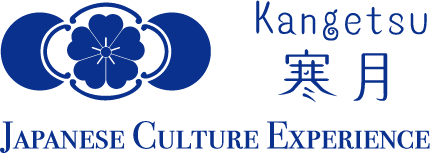Introduction to Japanese Calligraphy Tools Japanese Calligraphy Experience in Kyoto
The Transmission and Development of the Four Treasures of Study in Japan
The Four Treasures of Study (brush, ink, inkstone, and paper) were introduced to Japan from China via the Korean Peninsula and became widely used from the Nara and Heian periods.
In Japan, each tool evolved uniquely, forming a distinct calligraphy culture.
Brush: Brush production in Japan began during the Nara period, with the "Nara brush" from Nara Prefecture gaining high esteem and continuing to this day.
Ink: Based on Chinese techniques, Japan developed its own "Waboku" (Japanese ink).
Inkstone: During the Edo period, Japan popularized its own inkstones called "Wasen," often made from domestically sourced stones.
Paper: Japanese paper, or Washi, evolved with unique methods to enhance ink expression. "Gasen paper" became particularly popular for calligraphy.

Introduction to Japanese Calligraphy
Japanese Calligraphy is a traditional Japanese art that seeks artistic expression through writing characters.
Japanese calligraphy evolved from ancient Chinese characters and techniques, developing unique styles over different eras.
Initially valued as a means of record-keeping and communication, it gradually became an art form known as "Shodō" (the way of writing), recognized for its aesthetic qualities.
Japanese Calligraphy was introduced to Japan during the Asuka period in the 6th century, coinciding with the transmission of Buddhism from China.
The need for writing sutras and Buddhist doctrines brought about the use of Chinese characters, embedding calligraphy techniques and aesthetics in Japanese culture.
1. Brush
The brush is the fundamental tool in calligraphy, used to create the strokes of characters. Various types of animal hair, such as sheep, horse, and weasel, are used.
Each type of hair offers different softness or firmness, affecting the ease and style of writing.
- **Sheep Hair Brush**: Soft, holds ample ink, and allows for rich variation in strokes.
- **Horse Hair Brush**: Firm, ideal for precise strokes and small characters.
- **Mixed Hair Brush**: Combines different hair types for balance in flexibility and durability, favored by many calligraphers.

2. Ink
Ink serves as the medium for writing and is typically made from soot derived from pinewood ("Shōen") or rapeseed oil ("Yuen").
Ink creates depth and variation through interaction with the brush and paper.
- **Solid Ink**: Traditional ink sticks that require grinding with water on an inkstone. It allows control over the ink’s concentration and offers a pleasant scent.
- **Liquid Ink**: Pre-mixed ink (Bokujū), convenient for beginners or quick practice sessions.

3. Inkstone
The inkstone is used to grind solid ink with water, creating the liquid ink needed for writing.
Traditionally made from natural stone, inkstones are valued for their smoothness and durability.
- **Natural Inkstone**: Provides stable ink quality and smooth grinding.
- **Artificial Inkstone**: Made from ceramics or resin, offering a more affordable option, though with differences in ink quality and writing feel.

4. Paper
Japanese Calligraphy paper, such as Washi or Gasen paper, is designed to enhance ink absorption and color expression.
Different paper qualities and thicknesses affect the ink's bleed and the brush's glide.
- **Gasen Paper**: Known for its rich ink bleed, creating beautiful character spreads.
- **Hanshi Paper**: A standard calligraphy paper ideal for practice and commonly used by beginners.

5. Other Auxiliary Tools
Several supplementary tools support the calligraphy process:
- **Paperweight**: Keeps the paper steady for writing.
- **Underlay**: A felt or fabric mat placed under the paper to prevent ink from seeping through.
- **Brush Wrap**: A fabric case for protecting and storing brushes.
These tools enhance the calligraphy experience, making it more comfortable and effective, especially for beginners.

Commonalities Between Japanese Calligraphy and Zen Commonalities Between Japanese Calligraphy and Zen
The State of No-Mind
Japanese Calligraphy and Zen are symbolic traditions deeply rooted in Japanese culture. Zen philosophy significantly influences calligraphy techniques and expression, with both emphasizing the pursuit of spirituality.
- The State of No-Mind
- In Zen practice, "no-mind" refers to clearing the mind of distractions. In calligraphy, achieving this state leads to natural and powerful strokes.
- Self-Exploration
- Zen involves exploring one's essence. Similarly, calligraphy provides an opportunity for self-reflection and expression through brushwork.
- Simplicity and Naturalness
- Zen aesthetics value simplicity and natural beauty. Japanese Calligraphy also appreciates unembellished works with profound meaning.
- Brush Zen Way
- *Hitsuzen-dō* merges calligraphy with Zen practice, aiming for self-discovery and spiritual growth through brushwork.
- Historical Background
- The connection between Zen and calligraphy dates back centuries. Zen monks' calligraphy, or *Bokuseki*, embodies Zen spirit and is often used in tea ceremony scrolls.







